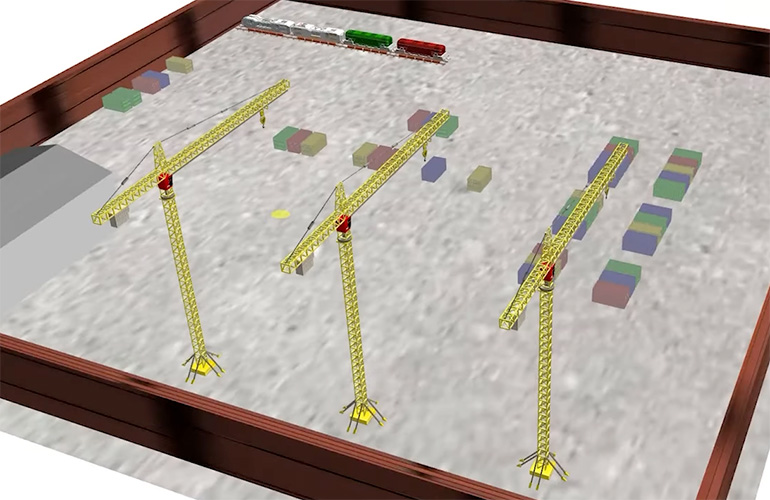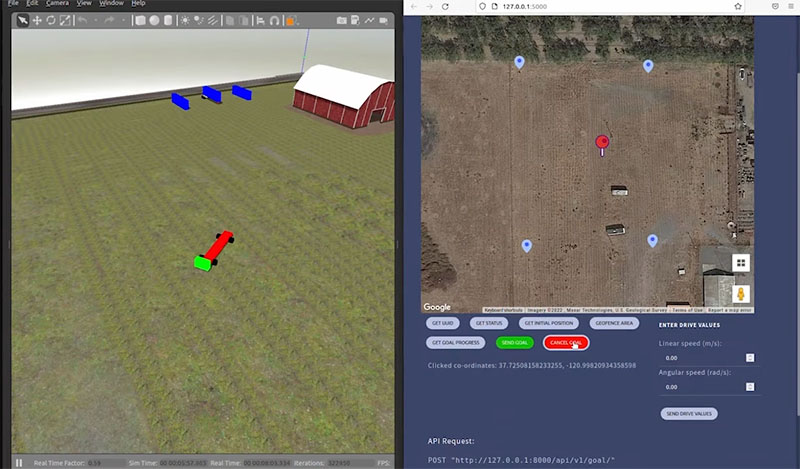|
Listen to this article  |

Polymath Robotics’ first product includes a simulated environment in which robotics developers can edit code and test the output with a simulated sensor stack. | Credit: Polymath Robotics
Polymath Robotics recently exited stealth mode with its first product. The company is developing a software stack that enables autonomous mobile robotic vehicle developers to speed up their development cycle.
CEO and co-founder Stefan Seltz-Axmacher described the solution as a critical infrastructure element that will help the robotics market mature. Seltz-Axmacher compared the current maturity of robotics development to SaaS enterprise software from a decade ago. That was a time when enterprise software developers needed to set up and manage their own data centers and server infrastructure to support cloud-based applications.
What happened next was the explosion and evolution of cloud-based infrastructure-as-a-service (IaaS) and platform-as-a-service (PaaS) providers. Amazon Web Services (AWS), Microsoft Azure and Google Cloud Platform have emerged as some of the leading cloud infrastructure providers, hosting the compute, networking and storage services to support both large- and small-scale software development.
From this novel innovation came the opportunity for anyone with a business idea and a credit card to quickly set up the necessary infrastructure to develop and operate a software-based business.
Seltz-Axmacher believes that the robotics market is ripe for a similar disruption, and this was the genesis of Polymath Robotics.

Polymath Robotics’ ready-to-run simulation environment in Gazebo includes a full ROS stack. | Credit: Polymath Robotics
Building a robotics company is hard
Polymath Robotics is not a competitor to ROS. In fact, ROS is one of the core building blocks of the Polymath solution. Seltz-Axmacher is a robotics startup veteran, having been the co-founder and CEO of Starsky Robotics, a long-haul autonomous trucking company that shut down in 2020.
From that experience, Seltz-Axmacher wanted to find a way to make it easier to develop autonomous vehicles. The stated goal of Polymath Robotics is to build “plug & play autonomy for industrial vehicles.”
The company has a roadmap to the end game of a full stack for plug-and-play autonomy. The initial offering, however, is a complete simulation environment for developing autonomous mobile robots and industrial vehicles.
Like the cloud automation services that allow you to set up a full stack of compute, storage, and network in AWS, Polymath Robotics said it allows you to quickly set up a cloud-based instance of a simulation environment and begin coding and testing.
It’s an ambitious goal, but Seltz-Axmacher compared the opportunity to generalizing the capabilities of Bear Flag Robotics, only in a cloud-based subscription model. John Deere purchased Bear Flag Robotics for $250M in August 2021.
And where Bear Flag is focused only on agricultural automation, Seltz-Axmacher sees a general purpose platform that will work for not only agriculture, but any ground-based field robotics application, including mining and construction vehicles. The company is “only focusing on vehicles that are allowed to come to a stop when an obstacle is detected.”
The end game for Polymath is to reduce the complexity of building an automated mobile robot, so that the product team can focus on the complexities of the application.
Credit: Source link


Comments are closed.